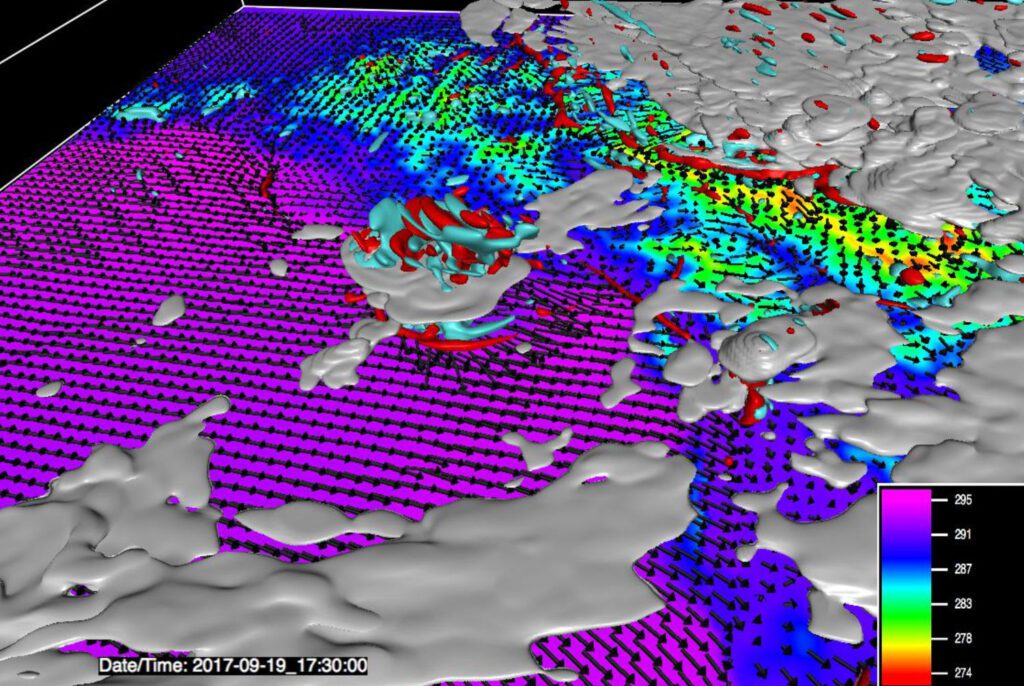Every year, disasters cause serious harm to infrastructure and populations around the world. Properly managing these extreme events requires an understanding of the evolution of the physics of weather events, especially in areas with complex orography. This allows for the more accurate prediction of events and their impacts on territories and populations, and thus to establish prevention measures.
Department activities – The department integrates basic research on atmosphere dynamics with the operational aspects of weather forecasting, using high resolution models to predict the evolution of atmospheric phenomena for very short range prediction purposes ( WRF operational model in Italy, WRF crisis on demand for example in Iran, Mozambico and so on), based on the data assimilation of observations collected from meteorological stations, radar and satellites, as well as to study future scenarios that take climate change into account. The department also studies coupled atmosphere-sea processes. Initially active in the study of basic atmospheric processes through the use of simplified models, the department increased its research area thanks to its work in important international projects (see below). Currently, the department is developing a set of research and pre-operational services by combining HPC, Cloud and Big Data to improve the prediction of hydro-meteorological phenomena of interest for Civil Protection, agriculture, air pollution, and renewable energy applications.

Main projects – The department participated in DRIHMS (2009-2011) the EU funded project that aimed to create a sharing platform for data and models at the European level, and in the DRHIM project to exploit European computing resources for high performance and grid computing. The network originated from DHRIMS was subsequently extended to the Unites States, through another EU funded project in 2011/2015 – DRIHM2US . Results achieved in these projects then found a new life in EXPRESS-HYDRO (2014-2015) projects for the study of extreme atmospheric processes in the European area in current and future climates, paving the way for the study of the impact of aerosols on rainfall process over complex orography areas in future climates, as well as in the STEAM (2018-2019) project for the assimilation of ESA satellite observations (Sentinel and GNSS) in high resolution meteorological modelling of severe weather in the Mediterranean and sub-Saharan Africa. Currently, the department is involved in the LEXIS project (2019-2021) and e-shape project (2019-2023), in which pre-operational services will be developed, based on large-scale geographically-distributed resources (weather stations, satellites observations) from existing HPC infrastructure, employing Big Data analytics solutions and augmenting them with Cloud services.
Within this field, CIMA Research Foundation has established collaborations with several national and international organizations such as regional and national meteorological offices, as well as with the European Centre for Medium Range Weather and Forecasts (ECMWF), Météo France, Institute for Applied Mathematics and Information Technologies of the ItalianNational Research Council (IMATI-CNR), Leibniz Supercomputing Centre (LRZ) and LINKS Foundation.